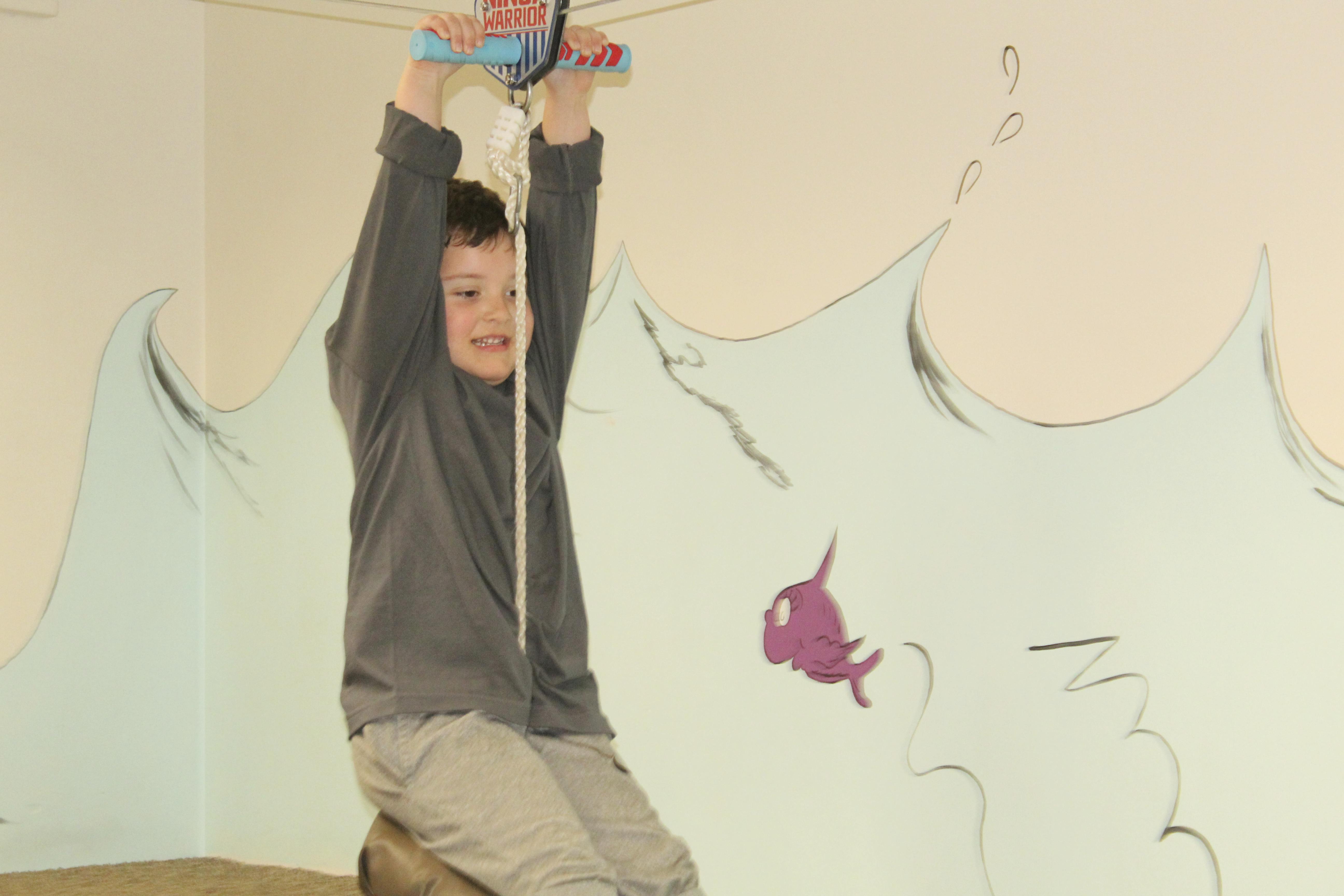
The way that we perceive sensations is very important to our ability to survive and interact with our environment. Our ability to process and coordinate the sensations of hearing, sight, smell, touch, taste, body perception in space and movement is vast and complex. The brain coordinates all these different sensations in multiple patterns to help us interact with the world around us. For example, the way an orange looks, smells, feels and tastes is distinct. You expect if you see an orange, that it will smell and taste like an orange.
Children with autism spectrum disorders, sensory processing disorder and many different conditions have difficulty processing normal sensations and making sense of these complex patterns. Often, it can become overwhelming and the child can just shut down, avoid, or overreact to sensory input that most of us can easily experience.
What is Sensory Therapy?
Sensory integration is a specific type of therapy that Oceanside Therapy Group provides to help children integrate these many different sensations so that they can respond in a more organized manner in terms of motor performance, behavior and social interaction. You can incorporate activities and strategies at home to help your child as well.
To support a child who craves lots of movement, providing structured opportunities throughout the day is helpful:
- Let him sit on a wiggle cushion or stand at the table when eating
- Schedule 2 or 3 outdoor play sessions
- Incorporate heavy work activities to help him stay organized
To support a child who is resistant to changes in routine and has difficulty transitioning:
- Provide visual schedules
- Give warnings prior to transitions
- Use reward systems to help motivate
To support a child who is defensive to touch input:
- Know their defensiveness is real and alarming to them – adjust your expectations, but don’t give in to every discomfort
- Plan for potential problems by planning ahead – know what you can control and what you can’t
- Give your child choices within reason so they feel like they have some control
Specific treatments are based on incorporating visual, auditory, tactile, movement and other sensations to help the child engage with his environment more successfully. This truly opens the child’s world!
For more information on sensory integration therapy, request an evaluation from Oceanside Therapy Group to speak with one of our occupational therapists.
Sensory Integration Helps Children with Autism
Many children with neurological problems, especially those with Autism and Asperger’s Syndrome, have difficulty processing normal sensations. Whether this is from touch, sight, smells, tastes or sounds, the brain cannot normally process and coordinate the signals. This results in a variety of different behaviors that can alienate individual children and make it difficult for them to interact normally with their surroundings.
A recent study proves what our rehab team has known for years, that Sensory Integration Therapy is key to helping children with neurological disorders engage and develop. This study evaluated children 4-8 years old diagnosed with Autism. Results were significantly higher for those children in the treatment group with Sensory Integration Therapy.
What is Sensory Integration Therapy?
Sensory integration refers to our nervous system’s ability to take in sensory information and organize it for use. It is the ability of our brain and body to take in sensory messages and effortlessly organize them into behavioral, social, emotional, motor, or physiological responses that are appropriate to an outside stimulus or environmental demand. For some children and even adults, sensory messages are not efficiently organized and a disruption in motor skill development, functional abilities, and/or behavior can be the result. Therefore, Sensory Integration Therapy is founded on these 3 assumptions:
- In order to learn we must take in and process sensation from movement and our environment, then use it to plan and organize adaptive behavior.
- If we don’t process sensation efficiently we will most likely have difficulty with learning, behavior, social and emotional development, and/or motor performance.
- By enhancing sensation through meaningful activity while achieving an adaptive response, we will improve the central nervous system’s ability to process sensation, thus improving learning, behavior, social and emotional development, and motor performance.
How Does Sensory Therapy Help my Child?
The primary goal of Sensory Integration Therapy at Oceanside Therapy Group is to improve underlying neurological processes rather than teach specific skills. In this way it is believed that the child will adapt responses that will lead to improved developmental abilities rather than teach simply adaptive skills.
The child should always be an active participant with his/her interests incorporated into the therapy sessions. For that reason, activities should be child-directed and motivating, which is why this therapy approach is presented within the context of play. This does not mean that the child dictates every moment of the therapy session, but that they lead and are guided towards activities that will have been motivated by them.
Results are promising with children who receive Sensory Integration Therapy and they can include markedly improved abilities to control themselves and the environment around them. For more information on our Sensory Integration Therapy Program, call us today at Oceanside, CA and even come in for a pediatric evaluation. Help your child reach their full potential!
